A Singapore company buys run-down shophouses that can be as much as 150 years old and converts them into modern coliving spaces. Here's how they do it.
Amanda Goh

- A Singapore company called Figment restores run-down shophouses and turns them into coliving spaces.
- Monthly rent for a room ranges from 2,000 to 4,900 Singapore dollars ($1,469 - $3,600).
Many streets in Singapore are lined with narrow, terraced homes painted in candy-colored shades of blue, pink, and green. These homes are called shophouses, and they tend to be two or three floors high.

The majority of the shophouses in Singapore were constructed between the 1840s and the 1960s. As the name suggests, the shophouse's ground floor is often used for commercial purposes, while people live upstairs.
While Singapore's shophouses are of historical importance to the city-state, they're also getting a new life as coliving spaces, thanks to a local company called Figment.
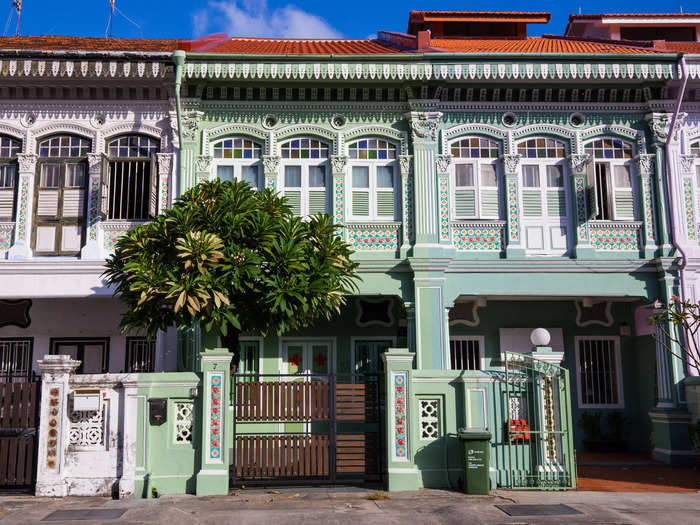
Fang Low, the CEO of Figment, grew up in a shophouse in Singapore. He founded the company in 2019, and today, Figment has 25 shophouses in historical neighborhoods across Singapore, including Emerald Hill, Joo Chiat, and Jalan Besar. The company has 10 staff members.
Figment gets its shophouses in three ways: It buys, rents, or manages the shophouses on behalf of the owners. Once Figment has renovated the space, it rents it out to individual tenants. There are around four to five rooms in each shophouse, and monthly rental ranges from S$2,000 to S$4,900 ($1,469 to $3,600) for a room, per the company's website.
For Low, the inspiration to transform shophouses into shared living spaces was partially socially driven.
"Figment was started in response to end that sense of loneliness that one might get in a new city," Low told Insider.
Low and his team talked to Insider about the process of renovating these historical homes, and shared a series of before-and-after photos to show how decades-old homes are transformed.
Because the shophouses are so old, they require extensive renovations before they're ready for tenants. That's where Figment's design team steps in.
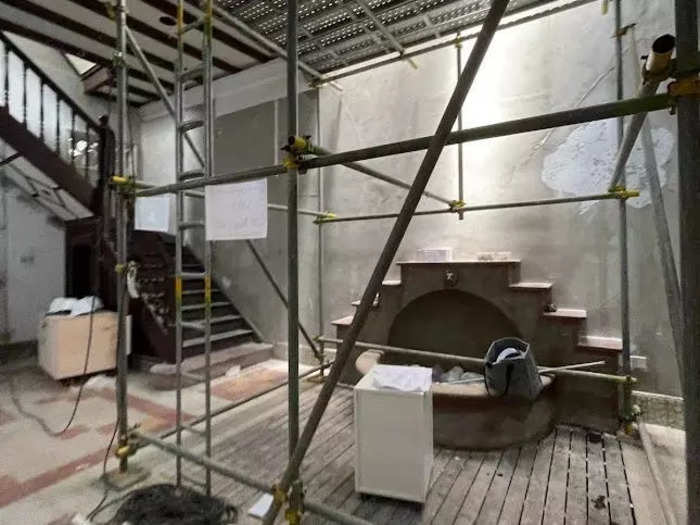
"The condition in which we take the shophouses on can be very different. Some of them haven't been touched in 20 or 30 years, and some of them were recently renovated," Michele Lim, head of design at Figment, told Insider.
Typically, it takes around two to three months to complete renovations on a single shophouse. It can take as many as 20 people to get all the work done, Lim said.
If the project is a huge undertaking, the Figment team will hire an external contractor to help, she added.
Figment's most recent shophouse needed the most work, she said. The house was built in the 1900s and despite issues with waterproofing and popping tiles, the previous tenant did not want to do any repairs.
"He just covered everything up. On the tiles, he put an extra floor on top. On the walls, he added another layer of wall. By the time we took over the house, we had to strip everything down," she added.
The renovation goal is to conserve as much of the original architecture as possible, Lim said.
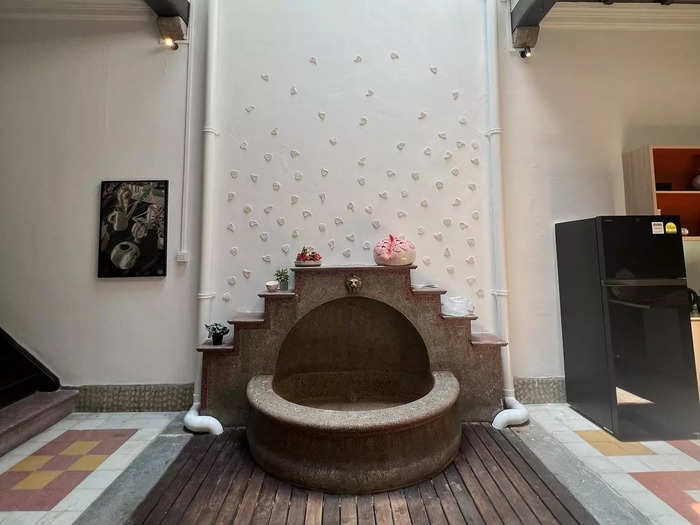
Generally, the team only replaces something if it's beyond repair.
"That is a decision that can be very difficult to make, because some of the repairs can be very costly or there are parts that can never be found," Lim added.
For one shophouse, the team was not able to find exact replacements for the damaged red floor tiles.
"We had to just pour concrete over to cover all the chips and cracks that were already in the existing tiles," she said.
The team turned the interiors of another shophouse completely white.
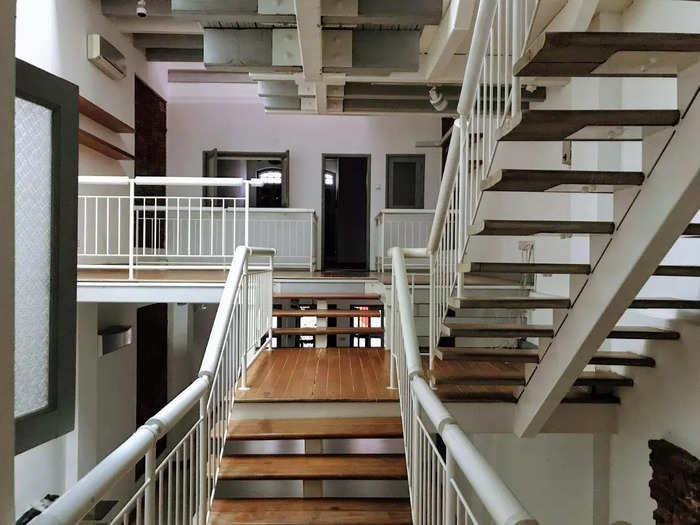
The shophouse pictured above was the first to come under Figment's management. It's also the house where Low grew up.
The Figment team partnered with a local design studio, Ministry of Design, to renovate the house. The idea was to reimagine the place as a blank canvas to signify a fresh start, Lim said.
"Everything was either painted white, or made in white," she added.
While the color distinguishes the shophouse from the others, Lim said that it — unsurprisingly — requires more upkeep.

Stains and scuff marks show up easily in the all-white house. The team makes an effort to repaint the walls every six months.
"For the most part, the floors are okay. We have tried to lay white carpets here and there to protect it a little bit more," Lim said.
The original red bricks of the all-white shophouse were hidden behind plaster. A portion of the walls was left bare in the completed home so that tenants could see what it looked like originally.
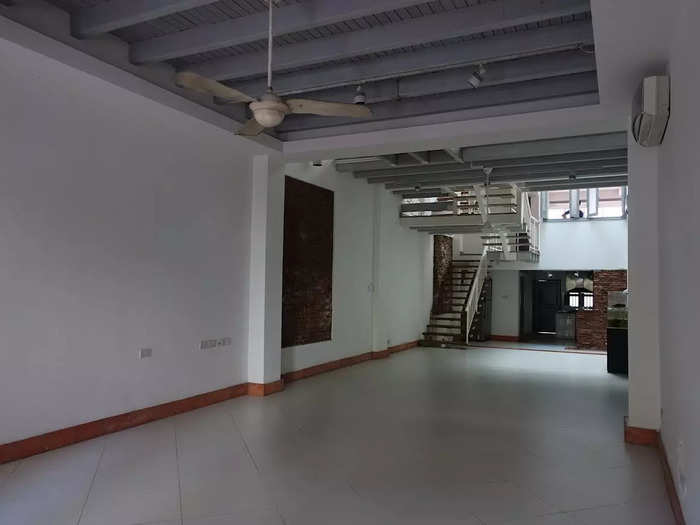
"There was a layer of plastering in front of the brick wall. We removed it and we installed a new wall in front, and then cut out a circle for the bricks," Lim told Insider.
"The red brick circle became part of the artwork of the house as well," Lim said.
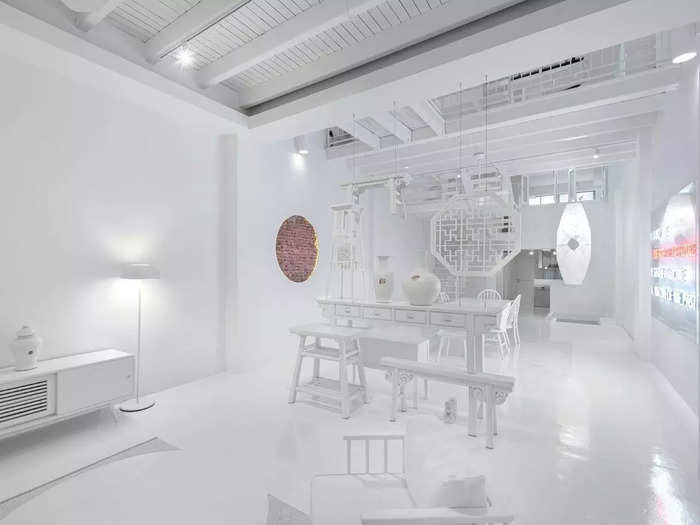
In a way, the bare portion of the walls gives tenants a glimpse into the building's past, she added.
The design of the completed home is influenced by its history and the neighborhood it's located in, Lim said.
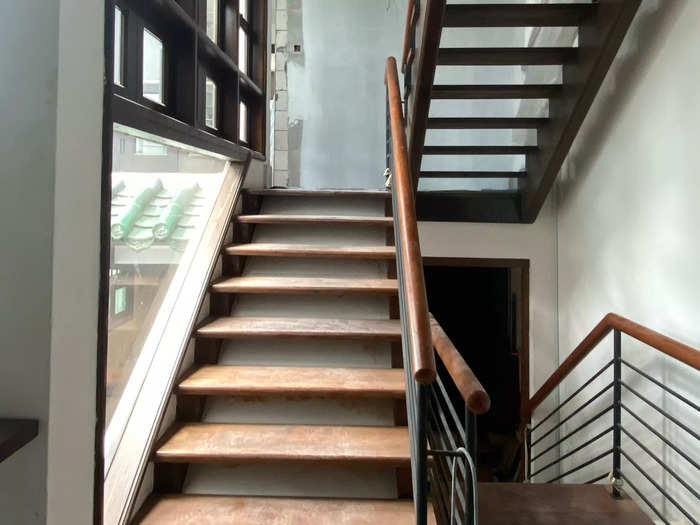
The team dives into the National Library records and the National Archives to find out more about each home they remodel.
"Most of the time we are quite lucky. Because they are conserved, we are usually able to find some record of it — even if it's just the before and after photos, or information about the neighborhood and what it looked like before," Lim said.
For instance, one of the shophouses was inspired by a previous owner.
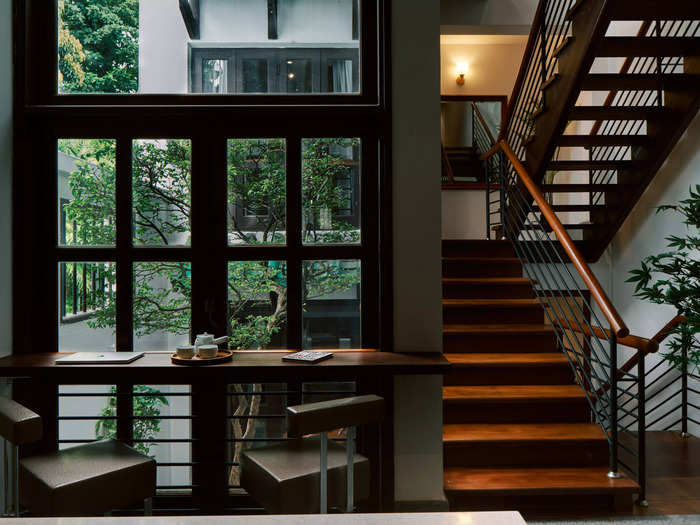
An investment banker owned the shophouse in the 1980s, and the team decided to integrate books and cozy work areas into the space.
"We decided to darken the space so that it feels like a hushed gentleman's bar," Lim said.
Most of the furniture in the shophouses is refurbished or sourced from secondhand stores.
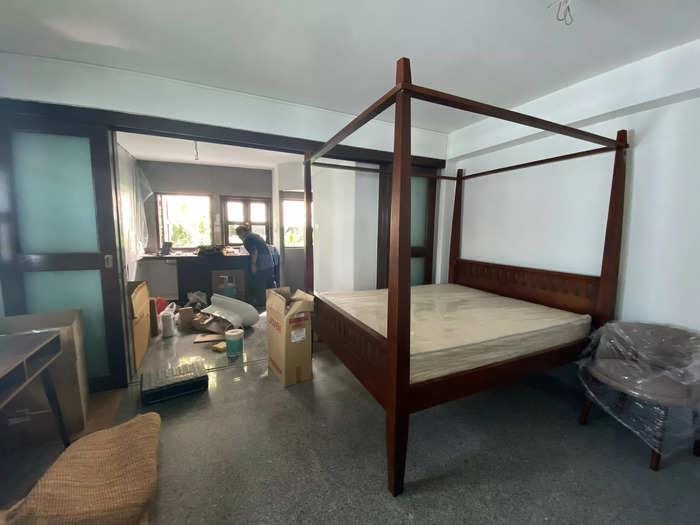
The Figment team tries to buy used furniture as much as possible.
"We work very closely with one of our partners, Hock Siong, to get the furniture we need. They specialize in secondhand furniture and refurbished antiques," Lim told Insider.
The team also usually has to overhaul the shophouses' electrical systems.
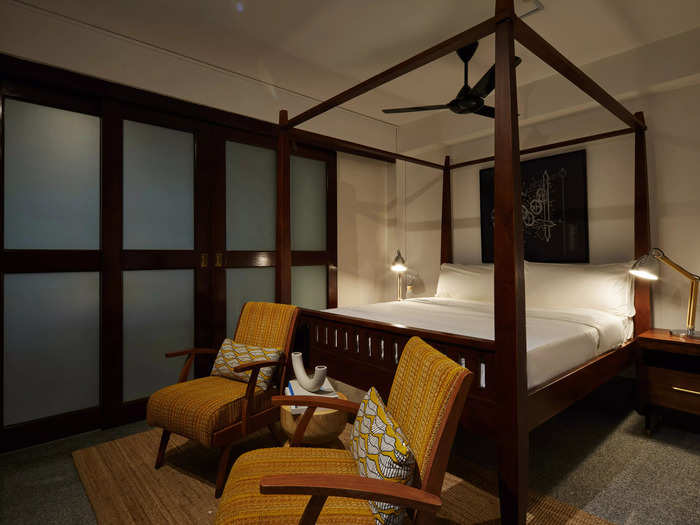
"We definitely will attempt to upgrade the electrical box, or at least conduct a very thorough check on them," Lim said.
Most of the bedrooms in Figment shophouses have their own ensuite bathrooms. Some bathrooms are part of the original blueprint, while others were installed during Figment's renovation process.

Most of the older shophouses came with one bathroom per floor, which was located at the back of the house, Lim said.
At the end of the day, Low sees Figment as more than a real-estate business.
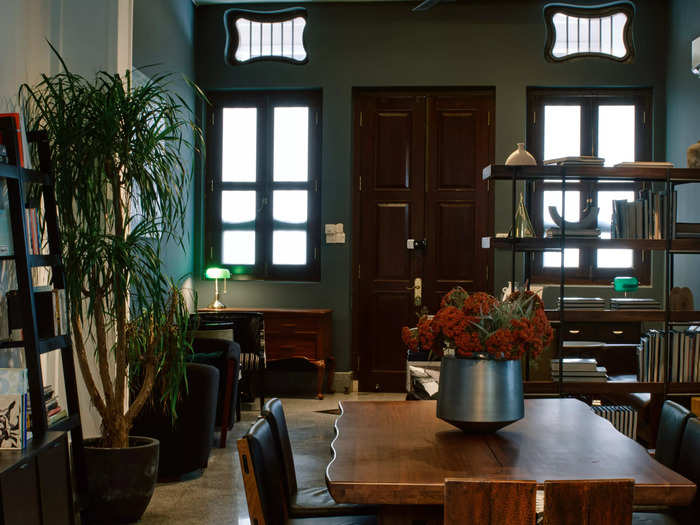
"We're never trying to put like 150 people into a building, trying to cut as many rooms as we can in a house. I think it's all just about the community that we're trying to build. It's all about making an impact locally for all, and not just the company and the company's investors," he said.
READ MORE ARTICLES ON
Popular Right Now
Popular Keywords
Advertisement